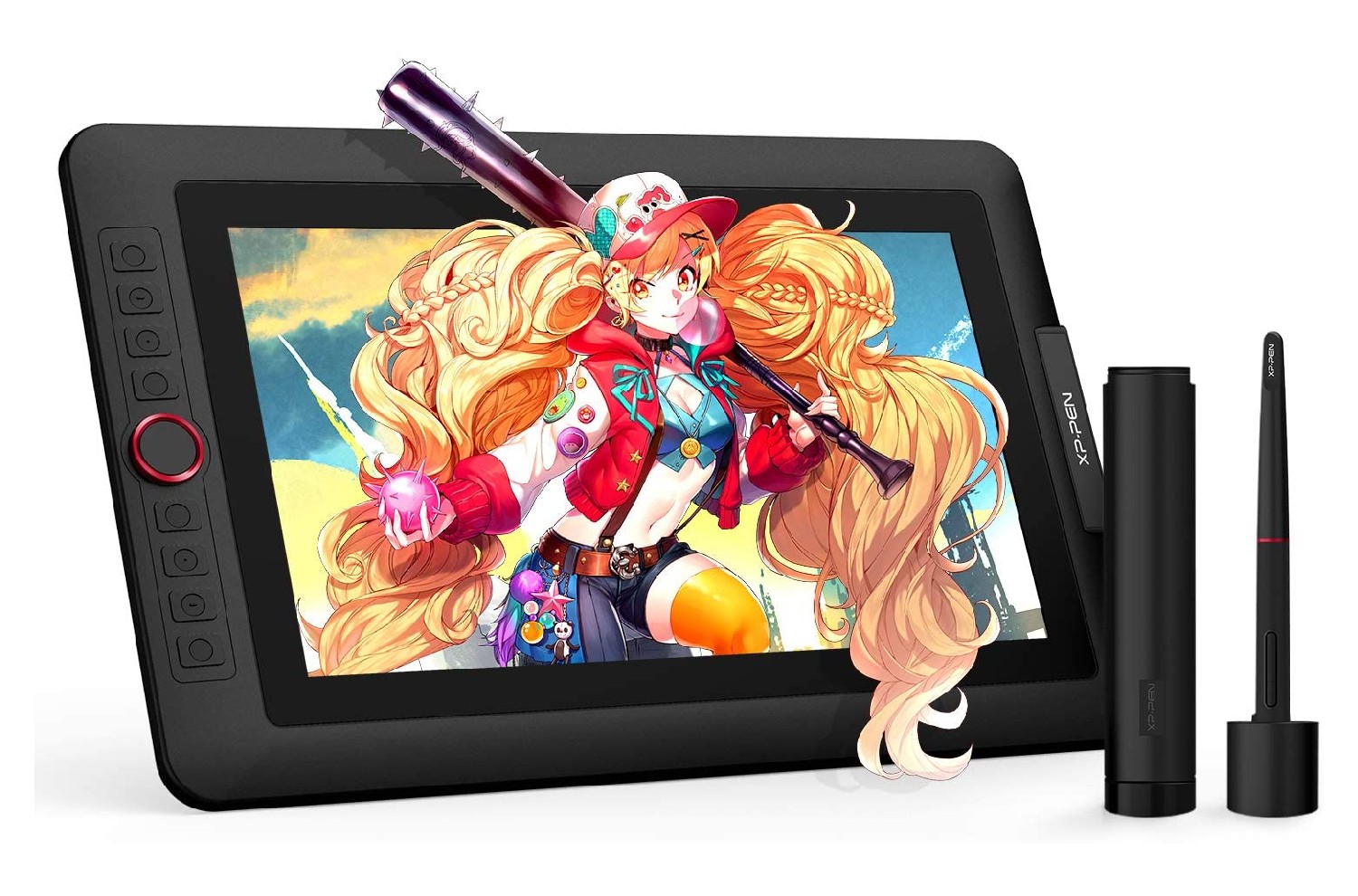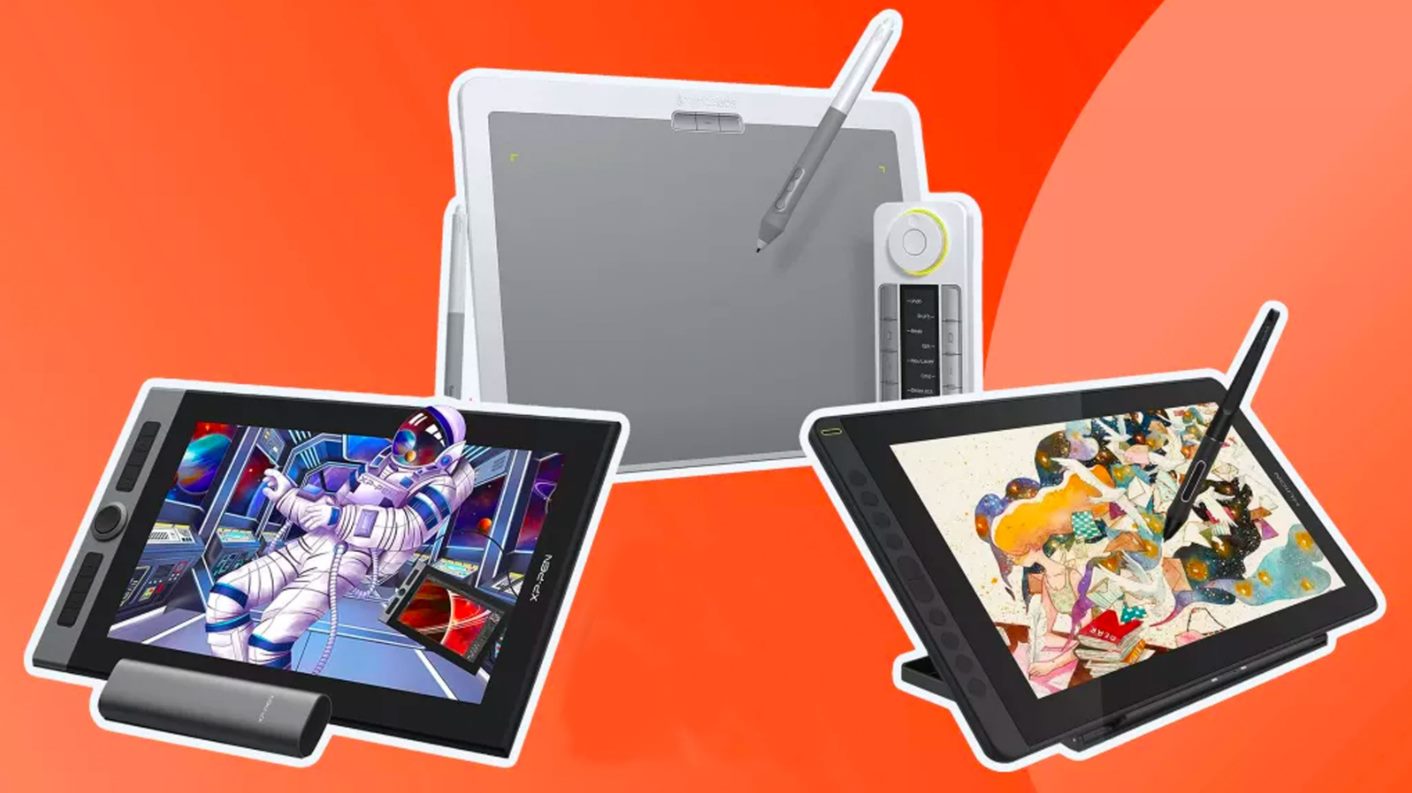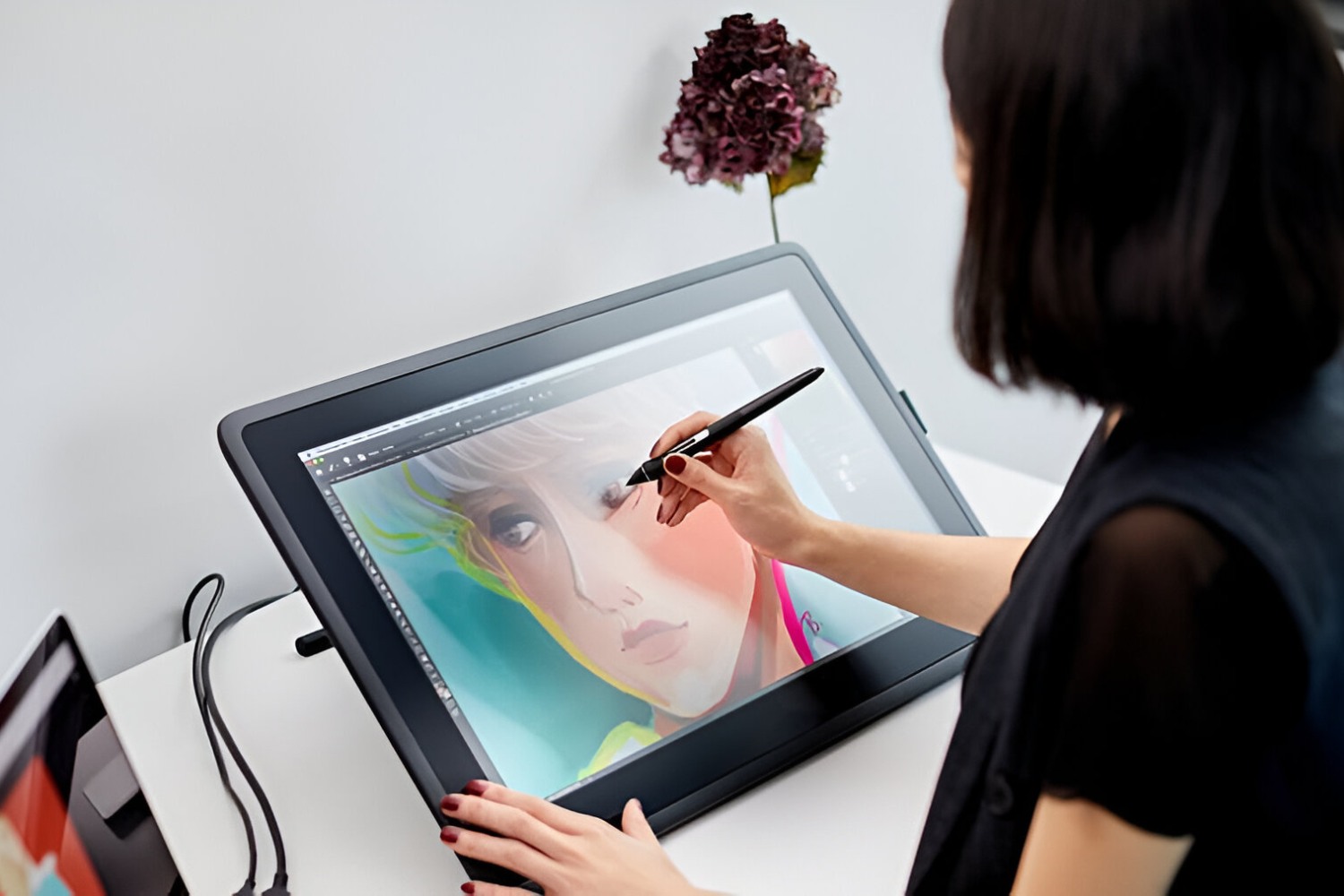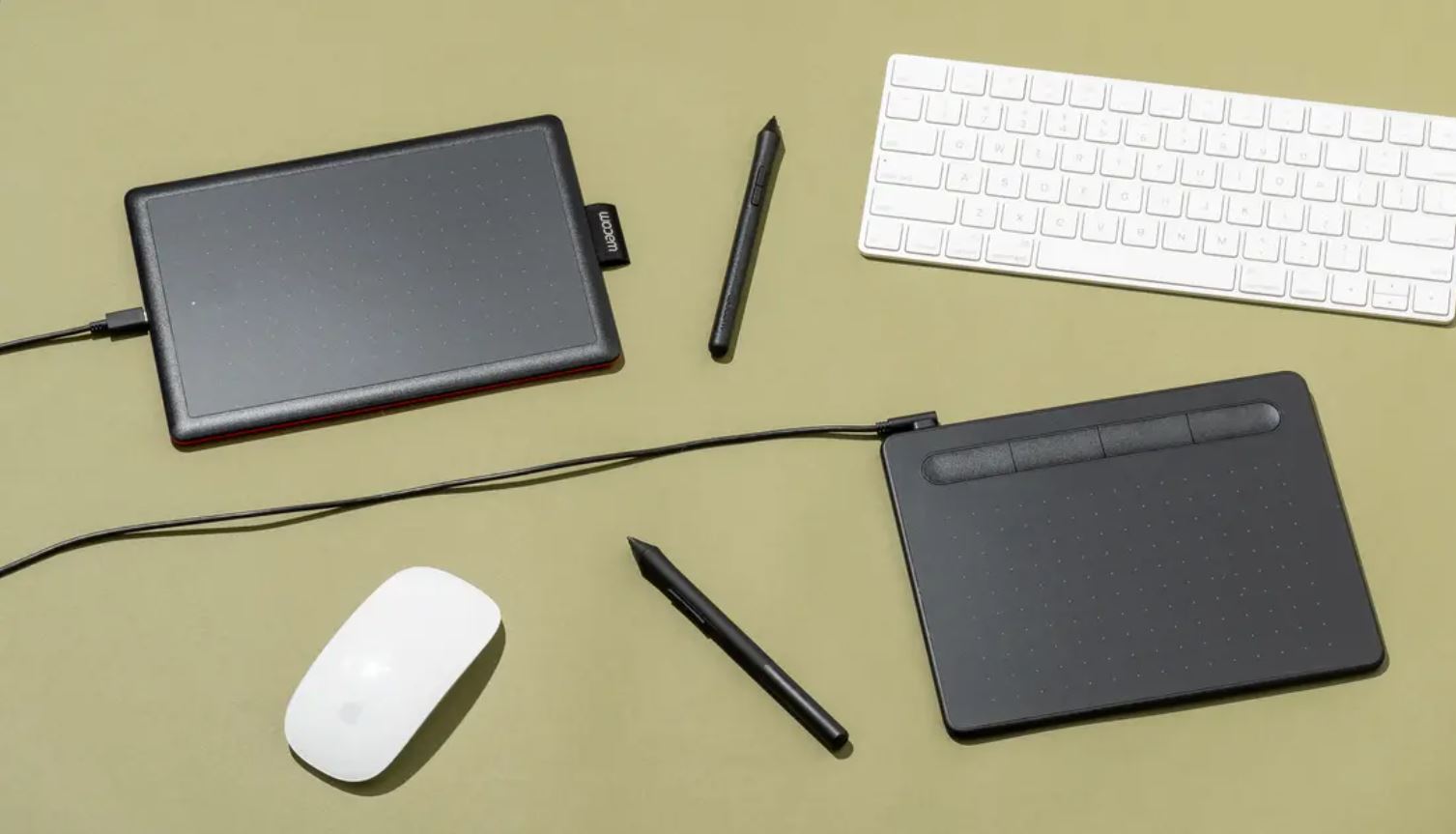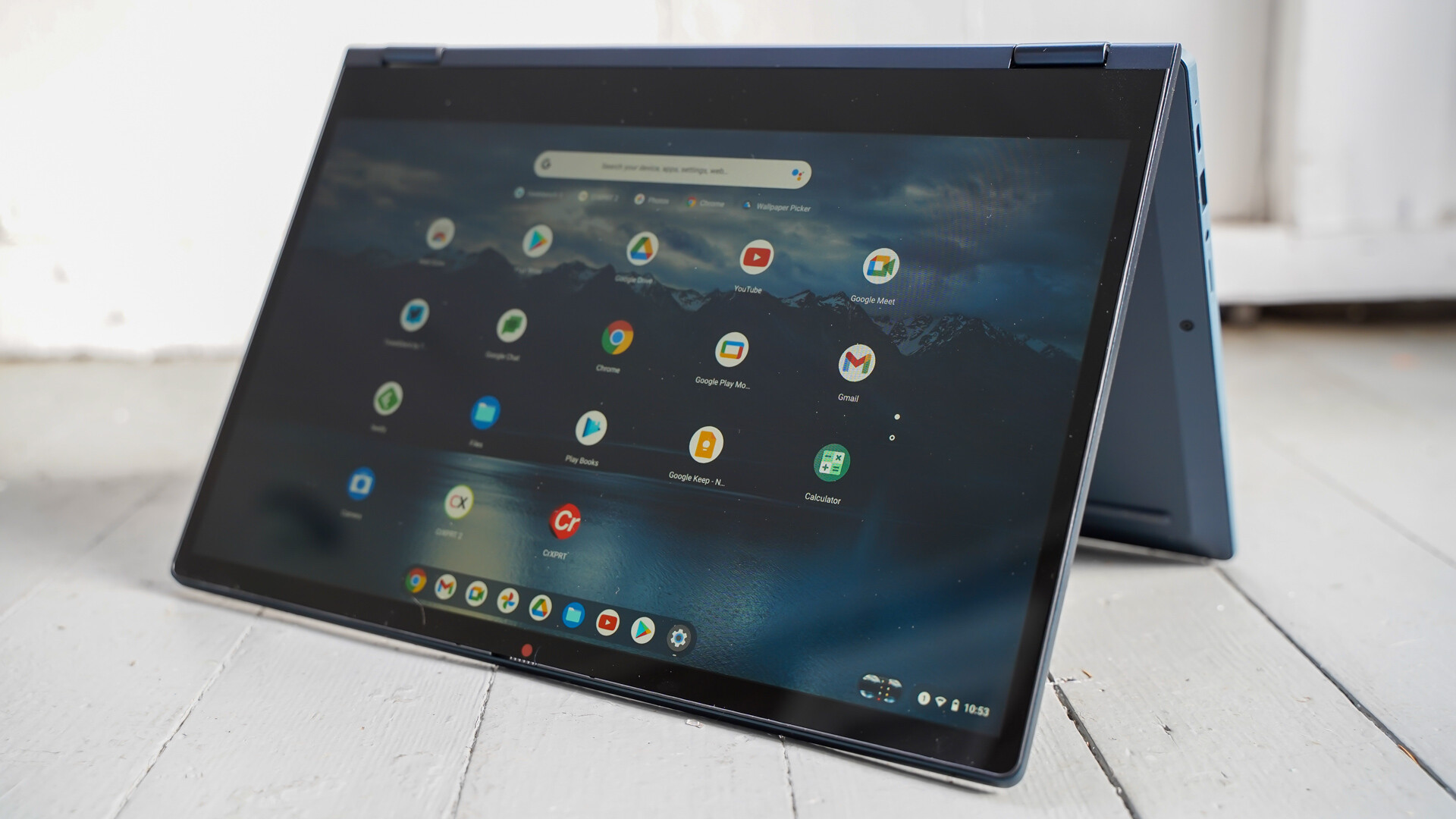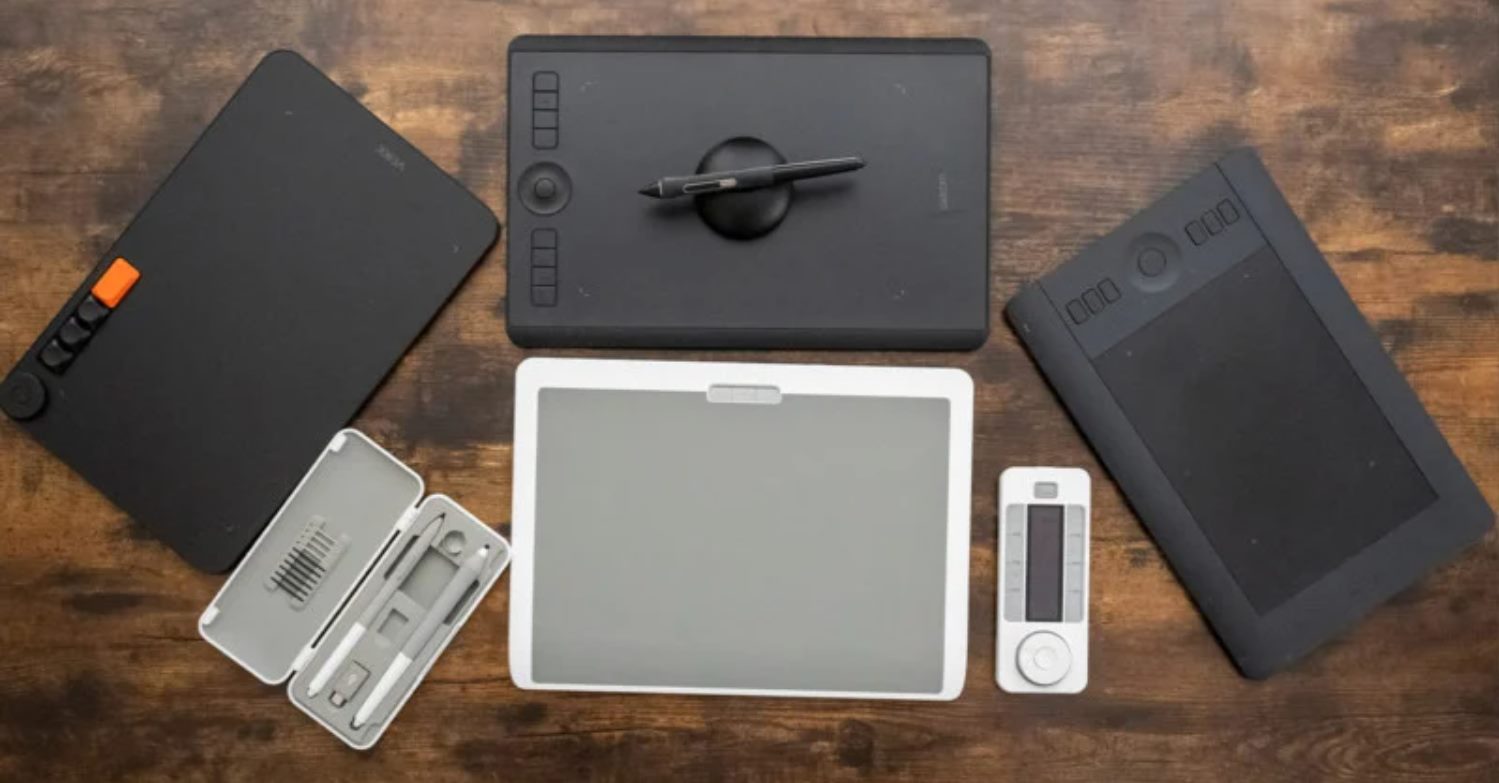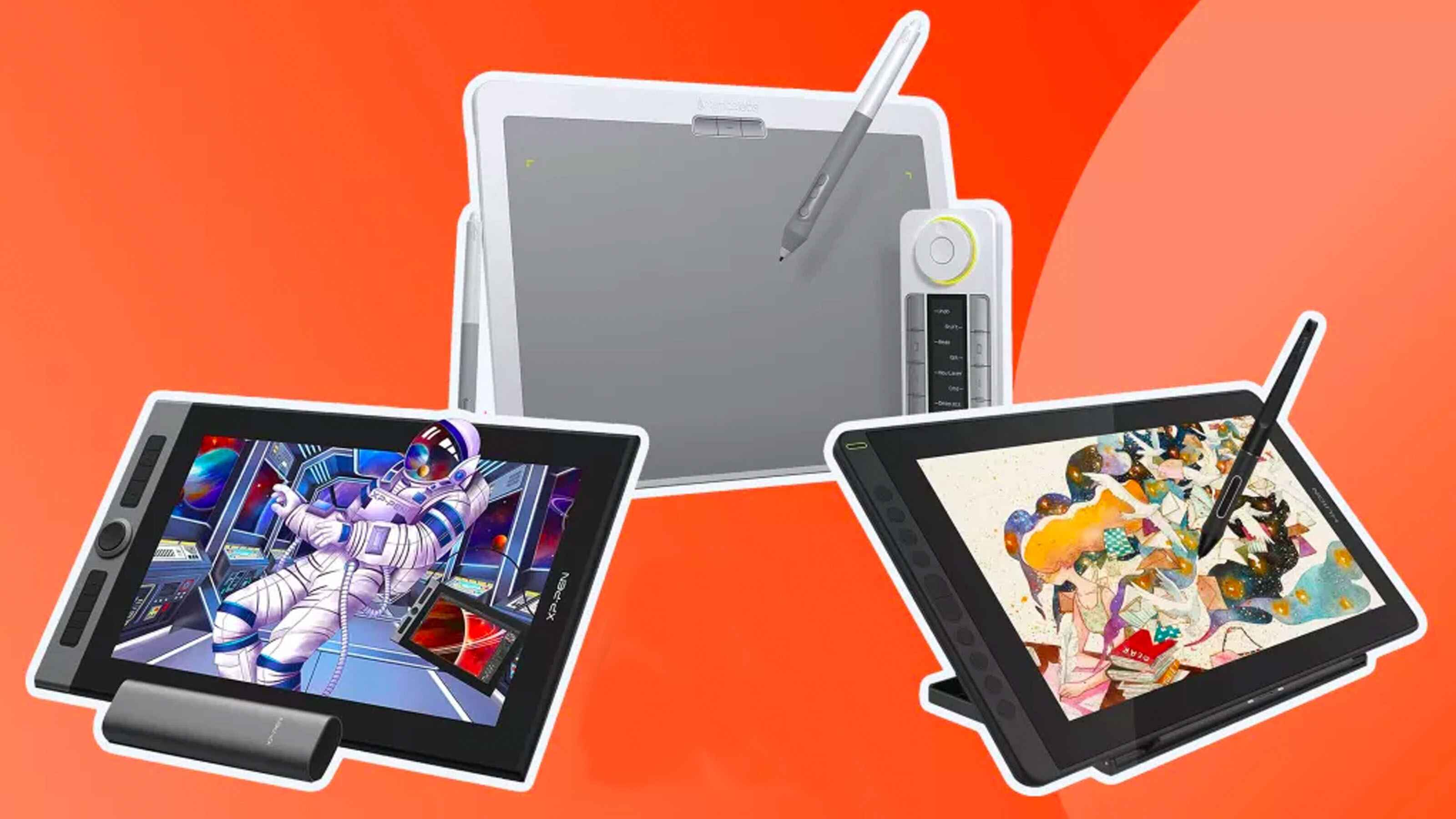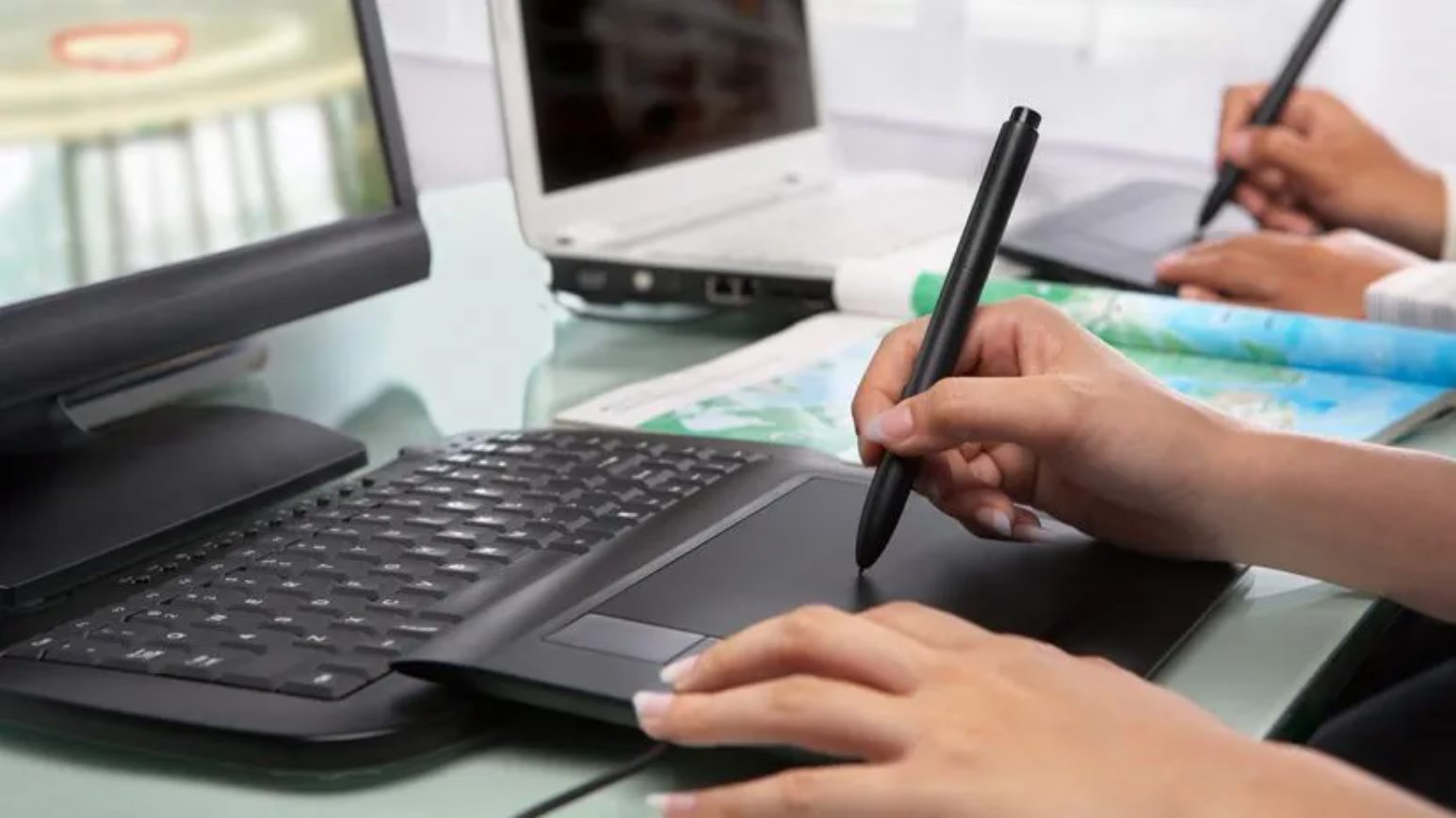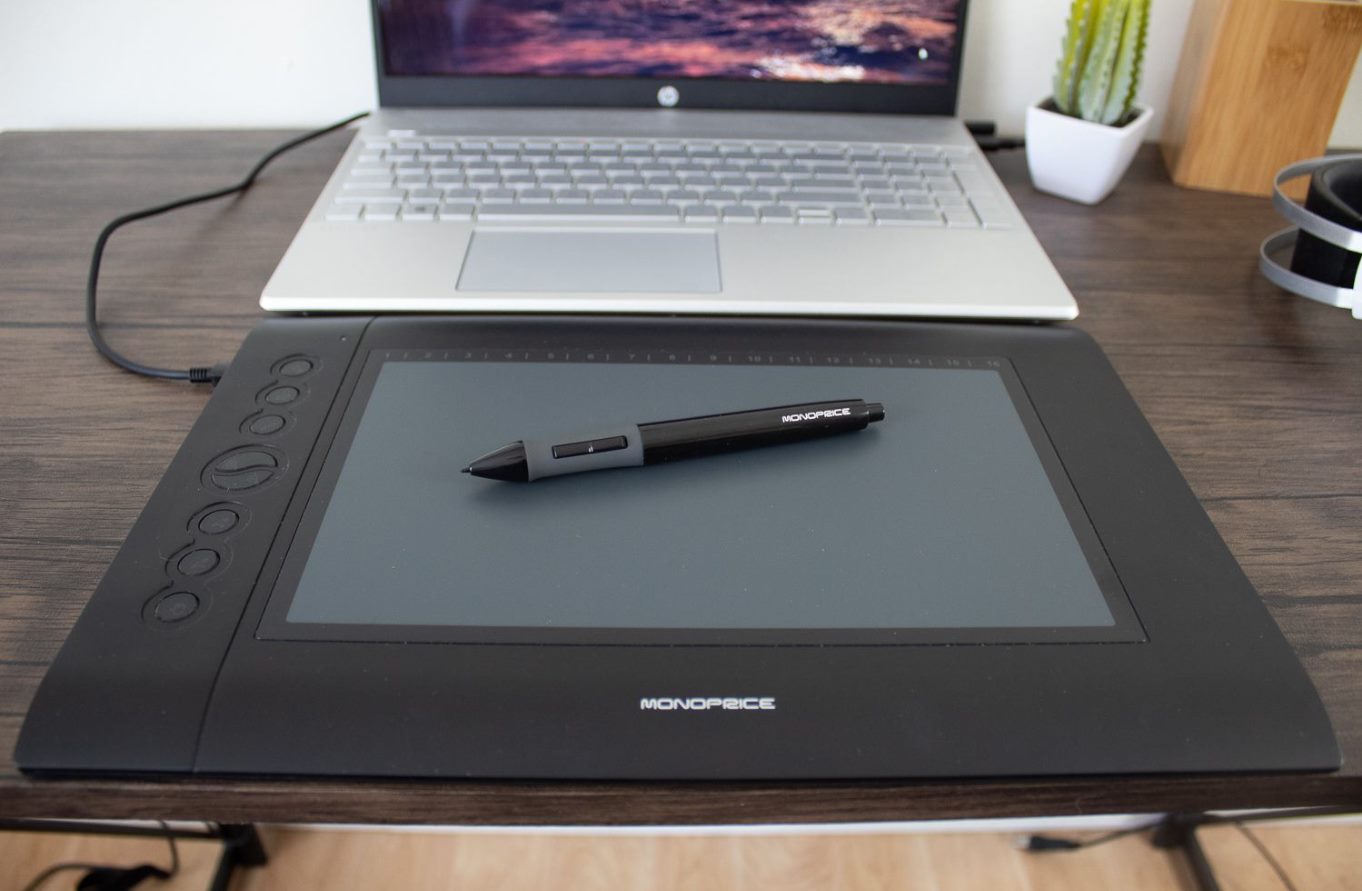Introduction
Graphic tablets have become an indispensable tool for artists, designers, and digital creatives in today’s digital age. These devices offer a seamless bridge between traditional pen and paper techniques and the digital realm, allowing for precise and intuitive input when creating digital artwork, editing photos, or designing graphics. With their advanced technology and versatile functionality, graphic tablets have revolutionized the way we interact with computers and have opened up new possibilities for artistic expression.
A graphic tablet, also known as a drawing tablet or pen tablet, is a specialized input device that allows users to draw, sketch, and design directly on its surface using a stylus or pen. It consists of two main components: the tablet itself, which acts as a pressure-sensitive drawing surface, and the stylus, which functions as a digital pen.
The tablet is typically connected to a computer or laptop via a USB or wireless connection, enabling the user to interact with software applications, such as image editing programs or digital art software, in a more natural and tactile way. Unlike a traditional mouse or trackpad, which can be cumbersome and imprecise when it comes to detailed work, a graphic tablet offers greater control and precision, allowing for smooth pen strokes, varied pressure sensitivity, and even tilt recognition.
With a graphic tablet, artists can experience the feel and responsiveness of traditional drawing tools while enjoying the advantages of digital technology. They can sketch, paint, and illustrate directly on the tablet’s surface, with the strokes appearing instantly on the display. This instant visual feedback enhances the creative process by allowing artists to make immediate adjustments and experiment with different techniques and styles.
In the following sections, we will delve deeper into the intricacies of graphic tablets, exploring how they work, the different types available, their key features, and the benefits they offer. We will also provide valuable tips on choosing the right tablet, setting it up, and making the most out of its capabilities.
What Is a Graphic Tablet?
A graphic tablet, also known as a drawing tablet or pen tablet, is a specialized input device that allows users to create digital artwork, edit photos, and design graphics with precision and control. It consists of a flat surface called the tablet and a stylus or pen that acts as a digital tool.
Unlike a traditional computer mouse or trackpad, a graphic tablet offers a more intuitive and natural way to interact with digital content. Artists can draw directly on the tablet’s surface, and their strokes are translated into digital form in real-time on a computer or connected device.
One of the key features of a graphic tablet is its pressure sensitivity. This means that the tablet can detect varying levels of pressure applied to the stylus, allowing for thicker or thinner lines, softer or harder brush strokes, and more nuanced shading. This level of control helps artists replicate traditional drawing techniques and create artwork that closely mimics the look and feel of physical media.
Graphic tablets also often support tilt detection, which means that the device can sense and respond to the angle at which the stylus is held. This feature allows for natural shading effects and the ability to create varying line widths based on the tilt of the pen.
Another advantage of graphic tablets is their ability to provide instant visual feedback. As artists draw on the tablet, they can see their strokes appear directly on the screen, eliminating the need to constantly look between the tablet and the computer monitor. This immediate feedback enhances the creative process, as it allows for quick adjustments and experimentation without interrupting the flow of work.
Graphic tablets come in a wide range of sizes and specifications to suit different needs and budgets. Some tablets have built-in displays, allowing artists to draw directly on the screen, while others require an external monitor. Regardless of the specific model, graphic tablets offer an efficient and versatile tool for digital artists, photographers, and designers.
Next, we will explore the inner workings of a graphic tablet and how it translates physical inputs into digital output, providing a deeper understanding of its functionality.
How Does a Graphic Tablet Work?
A graphic tablet works through a combination of hardware and software to translate physical input into digital output. Let’s take a closer look at the underlying technology that powers these devices.
The main components of a graphic tablet are the tablet itself and the stylus or pen. The tablet consists of a flat, pressure-sensitive surface that captures the movements and pressure exerted by the stylus. When the stylus touches the tablet’s surface or hovers above it, sensors in the tablet detect the position and movement of the stylus.
The stylus is equipped with sensors as well, which detect pressure and tilt. The pressure sensitivity allows the tablet to record the varying degrees of pressure applied to the stylus, resulting in lines of different thicknesses. Meanwhile, the tilt sensitivity detects the angle at which the stylus is held, enabling the creation of brush strokes with different widths and shading effects.
These physical inputs from the stylus and tablet are then transmitted to the connected computer or device. The tablet communicates with the computer through a USB or wireless connection, relaying the information captured by the sensors to specialized software.
The software, often called the driver, acts as an intermediary between the tablet and the computer’s operating system. It translates the data from the tablet into digital input that compatible applications can understand. The driver also allows users to customize settings such as pressure sensitivity, pen buttons, and shortcut keys.
In addition to the driver software, graphic tablets are also supported by various applications specifically designed for digital art, photo editing, and graphic design. These applications take advantage of the tablet’s features, offering a range of tools and features that enable artists to create stunning artwork.
One of the key benefits of using a graphic tablet is the level of precision and control it provides. The tablet’s pressure sensitivity allows artists to simulate the effects of different drawing tools, such as a pencil or a paintbrush, by adjusting the pressure applied to the stylus. This level of control combined with the intuitive nature of drawing directly on the tablet’s surface empowers artists to unleash their creativity and achieve intricate details.
Now that we understand the inner workings of a graphic tablet, let’s explore the different types of tablets available in the market and how they cater to different artistic and creative needs.
Different Types of Graphic Tablets
Graphic tablets come in a variety of types and configurations, each designed to cater to different artistic styles, budgets, and preferences. Let’s explore the most common types of graphic tablets available in the market today.
- Pen Tablets: Also known as non-display tablets, pen tablets are the most basic and affordable type of graphic tablets. These tablets consist of a flat surface with pressure-sensitive technology that captures pen input. Artists can draw and sketch on the tablet’s surface while looking at the computer monitor for visual feedback.
- Display Tablets: Display tablets, also called pen displays or interactive displays, feature an integrated display directly on the tablet surface. Artists can draw directly on the screen, making it feel more like traditional drawing or painting. Display tablets offer a more natural and intuitive drawing experience with real-time visual feedback.
- Pen Computers: Pen computers are complete computing devices with a built-in display and stylus input. These devices, such as graphics tablets or 2-in-1 laptops, combine the functions of a tablet and a computer. They offer the convenience of a full computer system, making them suitable for artists who require mobility and flexibility.
- Graphic Monitor: Graphic monitors are high-end display tablets designed for professional artists and designers. With exceptional color accuracy and wide viewing angles, these monitors provide an immersive and precise drawing experience. The stylus input directly interacts with the screen, offering unparalleled control for detailed artwork.
- Mobile Tablets: Mobile tablets, such as iPads or Android tablets, can also serve as graphic tablets with the help of specialized apps and stylus input. While they may not offer the same level of precision and pressure sensitivity as dedicated graphic tablets, they provide a portable and lightweight option for artists on the go.
When choosing a graphic tablet, it’s essential to consider factors like display size, resolution, pressure sensitivity, and compatibility with your preferred software. Each type of tablet has its own advantages and trade-offs, so it’s important to evaluate your specific needs and budget before making a decision.
Now that we are familiar with the different types of graphic tablets available, let’s discover the numerous benefits that using a graphic tablet can bring to digital artists, designers, and photographers.
Benefits of Using a Graphic Tablet
Using a graphic tablet offers a wide range of benefits for digital artists, designers, and photographers. These devices enhance creativity, improve workflow, and provide a more intuitive and natural way to create digital art. Let’s explore some of the key advantages of using a graphic tablet.
- Precision and Control: Graphic tablets offer unparalleled precision and control when compared to traditional input devices like a mouse or trackpad. The pressure sensitivity and tilt recognition enable artists to create lines of varying thickness, replicate brush strokes, and achieve detailed shading, resulting in more realistic and expressive artwork.
- Improved Workflow: With a graphic tablet, artists can work more efficiently and effectively. The direct interaction with the tablet’s surface and the instant visual feedback allow for seamless editing, quick adjustments, and experimentation. Artists can easily switch between tools and customize settings, reducing the need to navigate menus and palettes, which saves time and enhances productivity.
- Traditional Artistic Feel: Graphic tablets bridge the gap between traditional and digital art. Artists can replicate the feeling of drawing or painting with physical tools as they work directly on the tablet’s surface. This tactile experience helps maintain the artistic integrity of traditional techniques while embracing the advantages of digital media, giving artists the best of both worlds.
- Versatility and Flexibility: Graphic tablets are versatile tools that can be used in various creative disciplines. They are suitable for drawing, painting, photo editing, graphic design, and 3D modeling, among other applications. Artists can easily switch between different styles and mediums, experiment with different effects, and explore new creative possibilities.
- Effortless Editing: The ability to make immediate adjustments and corrections is a significant advantage of using a graphic tablet. Artists can easily undo mistakes, erase unwanted elements, and refine their work with precision, all while maintaining the integrity of the original artwork. This flexibility encourages experimentation and allows for creative exploration without the fear of making irreversible changes.
- Portability: Many graphic tablets, particularly display tablets and mobile tablets, offer portability options. Artists can carry their tablets with them and work on the go, whether they are traveling, attending meetings, or working in various locations. This flexibility allows for uninterrupted creativity and productivity, irrespective of the artist’s physical location.
Overall, using a graphic tablet dramatically enhances the creative process and allows artists to push the boundaries of their imagination. From precision and control to improved workflow and portability, graphic tablets have revolutionized digital artistry, offering endless possibilities for artistic expression.
In the next section, we will explore the common features and functionality found in graphic tablets, helping you understand the capabilities and options available to you.
Common Features and Functionality
Graphic tablets offer a variety of features and functionalities that enhance the creative process and make digital artistry more intuitive and enjoyable. These features vary depending on the model and brand, but there are several common features that many graphic tablets possess. Let’s explore some of these common features:
- Pressure Sensitivity: One of the fundamental features of a graphic tablet is pressure sensitivity. This feature measures the amount of pressure applied to the stylus and translates it into varying line thicknesses and brush strokes, allowing for greater control and precision in creating digital artwork. Tablets with higher pressure sensitivity levels offer more nuanced control over brush dynamics.
- Tilt Recognition: Tilt recognition is another important feature found in many graphic tablets. It detects the angle at which the stylus is held, enabling artists to create varying line widths and achieve more natural shading effects. Tilt recognition enhances the versatility and realism of digital artwork, giving artists more creative freedom and control.
- Programmable Buttons: Graphic tablets often include programmable buttons on the stylus or the tablet itself. These buttons can be customized to perform specific functions, such as zooming, undo/redo actions, or switching between brush sizes. Programmable buttons allow artists to streamline their workflow and access commonly used tools and commands more efficiently.
- Multi-Touch Gestures: Some graphic tablets come with multi-touch capabilities, similar to touchscreens. This functionality allows artists to use gestures like pinch-to-zoom or swipe gestures to navigate their artwork, rotate the canvas, or change brush sizes. Multi-touch gestures offer a more intuitive and fluid way of interacting with digital content.
- Wireless Connectivity: Many graphic tablets now support wireless connectivity, enabling artists to work without the constraint of physical cables. Wireless tablets offer greater mobility and freedom of movement, allowing artists to work comfortably from various positions or even remotely control their devices.
- Compatibility: Graphic tablets are designed to work with specific operating systems, such as Windows, macOS, or even Linux. While most tablets are compatible with a wide range of applications, it’s essential to ensure compatibility with your preferred software. Certain tablets may also have exclusive features or offer deeper integration with specific applications.
It’s worth noting that while these are common features found in graphic tablets, the specific functionalities and capabilities vary among different models and brands. When choosing a graphic tablet, it’s important to consider your workflow, artistic needs, and budget to find a tablet that offers the features and functionality that align with your specific requirements.
In the next section, we will provide valuable tips on selecting the right graphic tablet for your needs, helping you make an informed decision.
Choosing the Right Graphic Tablet
Choosing the right graphic tablet can greatly enhance your artistic workflow and allow you to unleash your creativity. However, with the wide range of options available in the market, it can be challenging to determine which tablet is best suited to your needs. Here are some essential factors to consider when selecting a graphic tablet:
- Usage: Determine how you plan to use the graphic tablet. Are you an illustrator, a photographer, or a graphic designer? Consider the specific features and functionalities you require for your preferred artistic discipline. For example, illustrators may prioritize pressure sensitivity and tilt recognition, while photographers may focus on color accuracy and fine image editing capabilities.
- Size and Active Area: Graphic tablets come in various sizes, so choose one that suits your preferred working style and available desk space. Keep in mind that larger tablets generally provide more precise control, but they may also be more expensive. Consider the active area—the actual drawing surface on the tablet—and ensure it offers a comfortable workspace for your artistic needs.
- Pressure Sensitivity and Tilt Recognition: These features greatly impact the natural feel and control of the tablet. Look for tablets with higher levels of pressure sensitivity and tilt recognition to achieve more nuanced artistic effects. Most professional-grade tablets offer extensive pressure sensitivity levels and tilt support.
- Connectivity: Consider how you plan to connect the graphic tablet to your computer. USB connectivity is a common option, but some tablets also offer wireless connectivity through Bluetooth or Wi-Fi. Wireless tablets offer greater freedom of movement, but they may have limitations in terms of battery life or signal stability.
- Compatibility: Ensure that the graphic tablet is compatible with your operating system (Windows, macOS, etc.) and the software applications you regularly use for your creative work. Compatibility issues can result in a poor user experience or limited functionality.
- Budget: Determine your budget range as graphic tablets can vary widely in terms of pricing. Consider your needs and priorities, and balance them with your budget constraints. Remember that investing in a higher-quality tablet can provide a more satisfying and long-lasting artistic experience.
It’s also beneficial to read product reviews, compare specifications, and seek recommendations from other artists or online communities. Additionally, try to get hands-on experience with different tablets whenever possible to assess their ergonomics and overall comfort level.
By carefully evaluating your artistic requirements, considering the features and functionalities that align with your needs, and mindful of your budget, you’ll be able to choose a graphic tablet that empowers your artistic journey and enhances your creative output.
In the next section, we will provide guidance on setting up and installing a graphic tablet, ensuring a smooth transition to using this valuable creative tool.
Setting Up and Installing a Graphic Tablet
Setting up and installing a graphic tablet is a straightforward process that allows you to start using your new creative tool quickly. Here are some essential steps to follow:
- Read the Manual: Start by reading the user manual or installation guide that comes with your graphic tablet. Each tablet may have specific instructions and requirements, so familiarize yourself with the manufacturer’s recommendations.
- Install Drivers and Software: Most graphic tablets require specific drivers or software to ensure compatibility with your operating system and enable advanced features. Manufacturers usually provide these drivers and software on their websites. Download and install the latest versions for optimal performance.
- Connect the Tablet: Connect your graphic tablet to your computer using the provided USB cable or wirelessly, depending on the tablet model. Follow the instructions given in the manual to establish a stable connection. Ensure that the tablet is securely connected and recognized by your computer.
- Calibrate the Tablet: Many graphic tablets require calibration to align the stylus movements accurately with the cursor movements on the screen. Follow the instructions provided by the manufacturer to calibrate your tablet. Calibration typically involves making a series of pen strokes on the tablet’s surface to ensure precise tracking.
- Customize Settings: Once your tablet is connected and calibrated, customize the settings to fit your preferences. This may include adjusting pressure sensitivity levels, assigning functions to programmable buttons, or modifying pen cursor options. Explore the tablet’s software and driver settings to personalize your artistic workflow.
- Test and Practice: Before diving into complex projects, take some time to test and practice with your newly installed graphic tablet. Experiment with different brush settings, pressure levels, and strokes to get a feel for the tablet’s capabilities. Practice will help you become comfortable with using the tablet and enable you to explore its full potential.
- Stay Updated: Graphic tablet manufacturers often release driver and software updates to enhance compatibility and introduce new features. Regularly check for updates on the manufacturer’s website and install them as needed to ensure optimal performance and stability.
Remember, each graphic tablet may have unique setup requirements, so always refer to the manufacturer’s instructions for specific guidelines and troubleshooting tips.
Now that your graphic tablet is set up and ready to use, we will provide you with valuable tips to maximize your experience and make the most out of your digital art journey in the next section.
Tips for Using a Graphic Tablet
Using a graphic tablet can greatly enhance your digital art experience and unleash your creativity. Here are some valuable tips to help you make the most out of your graphic tablet:
- Practice Regularly: Like any artistic tool, using a graphic tablet requires practice. Spend time regularly practicing with different brushes, techniques, and styles. Regular practice will help you become more comfortable and proficient in using the tablet, allowing you to achieve your desired artistic results.
- Experiment with Brushes and Settings: Graphic tablets offer a wide range of brushes and settings to explore. Experiment with various brushes, adjust pressure sensitivity, and explore different settings to find the ones that best suit your artistic style and preferences. Be open to trying new brushes and settings to discover unique effects and expand your creative possibilities.
- Utilize Shortcuts and Customizable Buttons: Take advantage of the tablet’s customizable buttons and programmable shortcuts. Assign frequently used commands, such as undo, save, or brush resizing, to these buttons. This will help streamline your workflow and save time by eliminating the need to constantly navigate menus and toolbars.
- Learn Keyboard Shortcuts: While the tablet’s customizable buttons are convenient, it’s also beneficial to familiarize yourself with keyboard shortcuts in your preferred software. Knowing essential keyboard shortcuts will further enhance your efficiency and allow for quick access to crucial tools and functions.
- Explore Different Software: Don’t limit yourself to a single software application when using your graphic tablet. Explore different digital art software options to find the ones that best suit your style and needs. Different software may offer unique features, brushes, and effects that can inspire and enhance your creative process.
- Use Layering: Take advantage of the layering capabilities in your digital art software. Layers allow for easy editing, organizing, and manipulating elements in your artwork independently. They also provide greater flexibility when making adjustments or experimenting with different effects. Practice using layers to refine your artwork and achieve professional results.
- Backup Your Work: Always remember to regularly back up your digital artwork. Accidents can happen, and it would be devastating to lose your hard work due to a technical glitch or device failure. Create multiple backups of your artwork on external drives, cloud storage, or online platforms to ensure its safety.
- Join Online Communities: Engage with other digital artists by joining online forums, groups, or communities. Not only can you learn from experienced artists and receive valuable feedback, but these communities also provide a platform for inspiration, collaboration, and support on your artistic journey.
Remember, every artist has their own unique style and process. Experiment, explore, and find what works best for you. With time, practice, and a willingness to learn, your graphic tablet will become an indispensable tool in your artistic arsenal.
Now that you have a good understanding of using a graphic tablet, let’s conclude our exploration of these valuable creative tools.
Conclusion
Graphic tablets have revolutionized the way artists, designers, and digital creatives approach their work in the digital realm. These devices offer a seamless transition from traditional pen and paper techniques to a more precise and intuitive way of creating digital art. With features like pressure sensitivity, tilt recognition, and customizable settings, graphic tablets provide artists with greater control, precision, and the ability to replicate traditional artistic techniques.
There are several types of graphic tablets available, including pen tablets, display tablets, pen computers, graphic monitors, and even mobile tablets with stylus input. Each type offers its own advantages and functionality, catering to artists’ diverse requirements.
When choosing a graphic tablet, it’s important to consider factors such as usage, size, pressure sensitivity, tilt recognition, connectivity, compatibility, and budget. By carefully evaluating these aspects and understanding your artistic needs, you can select a graphic tablet that aligns with your creative goals and provides an optimal user experience.
Setting up and installing a graphic tablet involves installing the necessary drivers and software, calibrating the tablet, and customizing settings to meet your preferences. Regular practice, exploration of different brushes and software applications, and the utilization of customizable buttons and shortcuts can greatly enhance your workflow and creative output.
Using a graphic tablet offers numerous benefits, including enhanced precision and control, improved workflow efficiency, a traditional artistic feel, versatility, and effortless editing. With these advantages, artists can push the boundaries of their imagination, achieve intricate details, and explore new creative possibilities.
In conclusion, graphic tablets are powerful tools that empower digital artists to bring their visions to life with precision and creativity. Whether you’re an illustrator, designer, or photographer, a graphic tablet can elevate your artistic journey and provide a more intuitive and enjoyable experience in the digital realm.







